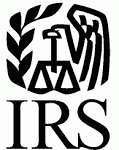 The Treasury and IRS have issued final regulations amending the definitions of qualified matching contributions (QMACs) and qualified nonelective contributions (QNECs) under regulations regarding certain qualified retirement plans that contain cash or deferred arrangements under section 401(k) or that provide for matching contributions or employee contributions under section 401(m).
The Treasury and IRS have issued final regulations amending the definitions of qualified matching contributions (QMACs) and qualified nonelective contributions (QNECs) under regulations regarding certain qualified retirement plans that contain cash or deferred arrangements under section 401(k) or that provide for matching contributions or employee contributions under section 401(m).
Under these new regulations, an employer contribution to a plan may be a QMAC or QNEC if it satisfies applicable nonforfeitability requirements and distribution limitations at the time it is allocated to a participant’s account, but need not meet these requirements or limitations when it is contributed to the plan.
History
On January 18, 2017, the Treasury Department and the IRS issued a notice of proposed rulemaking. Several comments on the proposed rules were submitted, and, after consideration of all the comments, the final rules adopt the proposed rules without substantive modification. However, the Treasury Department and the IRS determined that the distribution requirements referred to in the existing definitions of QMACs and QNECs in §§ 1.401(k)-6 and 1.401(m)-5 are more appropriately characterized as distribution limitations (consistent with the heading of § 1.401(k)-1(d)), and, accordingly, these definitions have been amended to refer to distribution limitations.
Implications of the New Rules
The new rule raises some questions relating to the application of Code section 411(d)(6) (protected benefits) in cases in which a plan sponsor seeks to amend its plan to apply the new rules. The application of section 411(d)(6) is generally outside the scope of these regulations. However, the IRS indicates in the discussion of the new rules that if a plan sponsor adopts a plan amendment to define QMACs and QNECs in a manner consistent with the final regulations and applies that amendment prospectively to future plan years, section 411(d)(6) would not be implicated.
In addition, in the common case of a plan that provides that forfeitures will be used to pay plan expenses incurred during a plan year and that any remaining forfeitures in the plan at the end of the plan year will be allocated pursuant to a specified formula among active participants who have completed a specified number of hours of service during the plan year, section 411(d)(6) would not prohibit a plan amendment adopted before the end of the plan year that permits the use of forfeitures to fund QMACs and QNECs (even if, at the time of the amendment, one or more participants had already completed the specified number of hours of service). This is because all conditions for receiving an allocation will not have been satisfied at the time of the amendment, since one of the conditions for receiving an allocation is that plan expenses at the end of the plan year are less than the amount of forfeitures. See § 1.411(d)-4, Q&A-1(d)(8) (features that are not section 411(d)(6) protected benefits include “[t]he allocation dates for contributions, forfeitures, and earnings, the time for making contributions (but not the conditions for receiving an allocation of contributions or forfeitures for a plan year after such conditions have been satisfied), and the valuation dates for account balances”).
Statutory Background
Section 401(k)(1) provides that a profit-sharing or stock bonus plan, a pre-ERISA money purchase plan, or a rural cooperative plan will not be considered as failing to satisfy the requirements of section 401(a) merely because the plan includes a qualified cash or deferred arrangement (CODA). To be considered a qualified CODA, a plan must satisfy several requirements, including: (i) Under section 401(k)(2)(B), amounts held by the plan’s trust that are attributable to employer contributions made pursuant to an employee’s election must satisfy certain distribution limitations; (ii) under section 401(k)(2)(C), an employee’s right to such employer contributions must be nonforfeitable; and (iii) under section 401(k)(3), such employer contributions must satisfy certain nondiscrimination requirements.
Under section 401(k)(3)(D)(ii), the employer contributions taken into account for purposes of applying the nondiscrimination requirements may, under such rules as the Secretary may provide and at the election of the employer, include matching contributions within the meaning of section 401(m)(4)(A) that meet the distribution limitations and nonforfeitability requirements of section 401(k)(2)(B) and (C) (also referred to as qualified matching contributions or QMACs) and qualified nonelective contributions within the meaning of section 401(m)(4)(C) (QNECs). Under section 401(m)(4)(C), a QNEC is an employer contribution, other than a matching contribution, with respect to which the distribution limitations and nonforfeitability requirements of section 401(k)(2)(B) and (C) are met.
Under § 1.401(k)-1(b)(1)(ii), a CODA satisfies the applicable nondiscrimination requirements if it satisfies the actual deferral percentage (ADP) test of section 401(k)(3), described in § 1.401(k)-2. The ADP test limits the disparity permitted between the percentage of compensation made as employer contributions to the plan for a plan year on behalf of eligible highly compensated employees and the percentage of compensation made as employer contributions on behalf of eligible nonhighly compensated employees. If the ADP test limits are exceeded, the employer must take corrective action to ensure that the limits are met. In determining the amount of employer contributions made on behalf of an eligible employee, employers are allowed to take into account certain QMACs and QNECs made on behalf of the employee by the employer.
In lieu of applying the ADP test, an employer may choose to design its plan to satisfy an ADP safe harbor, including the ADP safe harbor provisions of section 401(k)(12), described in § 1.401(k)-3. Under § 1.401(k)-3, a plan satisfies the ADP safe harbor provisions of section 401(k)(12) if, among other things, it satisfies certain contribution requirements. With respect to the safe harbor under section 401(k)(12), an employer may choose to satisfy the contribution requirement by providing a certain level of QMACs or QNECs to eligible nonhighly compensated employees under the plan.
A defined contribution plan that provides for matching or employee after-tax contributions must satisfy the nondiscrimination requirements under section 401(m) with respect to those contributions for each plan year. Under § 1.401(m)-1(b)(1), the matching contributions and employee contributions under a plan satisfy the nondiscrimination requirements for a plan year if the plan satisfies the actual contribution percentage (ACP) test of section 401(m)(2) described in § 1.401(m)-2.
The ACP test limits the disparity permitted between the percentage of compensation made as matching contributions and after-tax employee contributions for or by eligible highly compensated employees under the plan and the percentage of compensation made as matching contributions and after-tax employee contributions for or by eligible nonhighly compensated employees under the plan. If the ACP test limits are exceeded, the employer must take corrective action to ensure that the limits are met. In determining the amount of employer contributions made on behalf of an eligible employee, employers are allowed to take into account certain QNECs made on behalf of the employee by the employer. Employers must also take into account QMACs made on behalf of the employee by the employer unless an exclusion applies (including an exclusion for Start Printed Page 34470QMACs that are taken into account under the ADP test).
If an employer designs its plan to satisfy the ADP safe harbor of section 401(k)(12), it may avoid performing the ACP test with respect to matching contributions under the plan, as long as the additional requirements of the ACP safe harbor of section 401(m)(11) are met.
As previously defined in § 1.401(k)-6, QMACs and QNECs must satisfy the nonforfeitability requirements of § 1.401(k)-1(c) and the distribution limitations of § 1.401(k)-1(d) “when they are contributed to the plan.” Similarly, under the independent definitions in § 1.401(m)-5, QMACs and QNECs must satisfy the nonforfeitability requirements of § 1.401(k)-1(c) and the distribution limitations of § 1.401(k)-1(d) “at the time the contribution is made.” In general, contributions satisfy the nonforfeitability requirements of § 1.401(k)-1(c) if they are immediately nonforfeitable within the meaning of section 411, and contributions satisfy the distribution limitations of § 1.401(k)-1(d) if they may not be distributed before the employee’s death, disability, severance from employment, attainment of age 59.5, or hardship, or upon the termination of the plan.
Background to the Rule Change
Before 2017, the Treasury Department and the IRS received comments with respect to the definitions of QMACs and QNECs in §§ 1.401(k)-6 and 1.401(m)-5. In particular, commenters asserted that employer contributions should qualify as QMACs and QNECs as long as they satisfy applicable nonforfeitability requirements at the time they are allocated to participants’ accounts, rather than when they are first contributed to the plan. Commenters pointed out that interpreting sections 401(k)(3)(D)(ii) and 401(m)(4)(C) to require satisfaction of applicable nonforfeitability requirements at the time amounts are first contributed to the plan would preclude plan sponsors with plans that permit the use of amounts in plan forfeiture accounts to offset future employer contributions under the plan from applying such amounts to fund QMACs and QNECs. This is because the amounts would have been allocated to the forfeiture accounts only after a participant incurred a forfeiture of benefits and, thus, generally would have been subject to a vesting schedule when they were first contributed to the plan. Commenters requested that QMAC and QNEC requirements not be interpreted to prevent the use of plan forfeitures to fund QMACs and QNECs. The commenters urged that the nonforfeitability requirements under § 1.401(k)-6 should apply when QMACs and QNECs are allocated to participants’ accounts and not when the contributions are first made to the plan.
In considering the comments, the Treasury Department and the IRS took into account that the nonforfeitability requirements applicable to QMACs and QNECs are intended to ensure that QMACs and QNECS provide nonforfeitable benefits for the participants who receive them. In accordance with that purpose, the Treasury Department and the IRS concluded that it is sufficient to require that amounts allocated to participants’ accounts as QMACs and QNECs be nonforfeitable at the time they are allocated to participants’ accounts, rather than when such contributions are made to the plan.
The Final Rules


